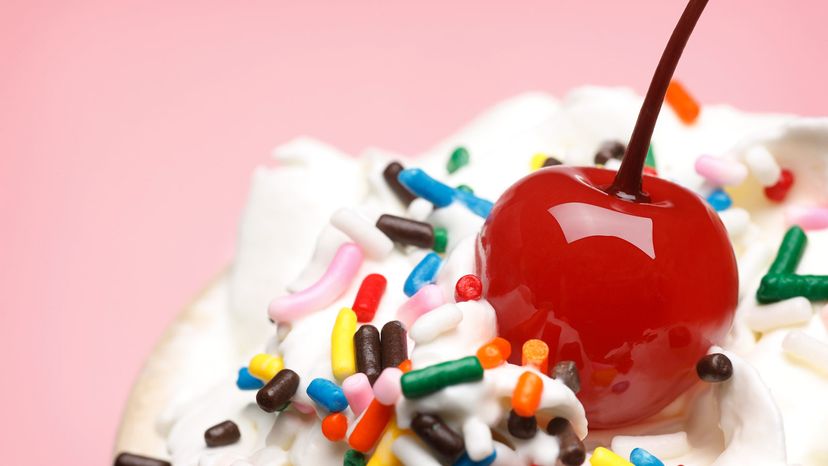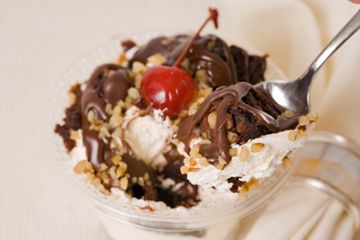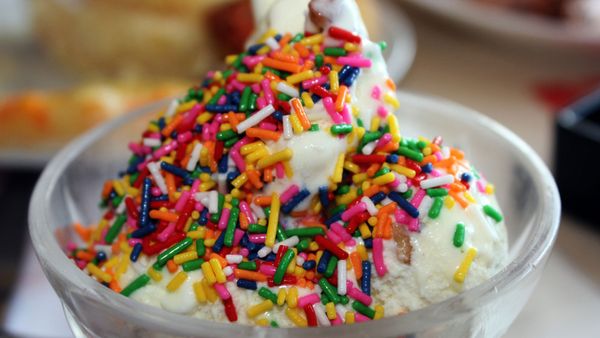
Anyone who's ever indulged in an ice cream sundae or a Manhattan cocktail is more than familiar with the ubiquitous maraschino cherry. It may not even seem to have much relationship to a "real" cherry, but make no mistake: Maraschinos start off as cherries off a tree. Usually, Gold, Rainier, or Royal Ann varieties are used.
But originally, the cherries of choice were marasca cherries, a sour type that grows in coastal Croatia. In the mid-19th century, these were brined using local ocean water and then soaked in a liqueur for preservation. This liqueur was made using the leaves, ground-up pits and juices of the fruit.
Advertisement
Marasca cherries were considered a delicacy and are quite expensive. So, companies started to make the knock-off maraschino cherries you see garnishing all kinds of things.


